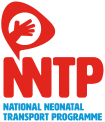THE NNTP TRANSPORT TEAMS
The NNTP has :
- One team available 24/7 for Critical Care Tranhsports (Red Team)
- A second 'Nurse led 'team available 08.00-20.00 Mon- Fri (excluding PHs) (Blue Team)
Under the supervision/attendance of a dediacted NNTP neonataologist, the transport teams consist of:
- A neonatal transport nurse
- A neonatal medical registrar/fellow (for critical-care transports )
- An ambulance Operator/ EMT/Paramedic (road transports)
- Air crew /paramedics (air transports)
- A NNTP Clinical Engineer (when required).
The teams are comprised of skilled and experienced staff from the three main Dublin maternity hospitals; The Coombe Hospital, The National Maternity Hospital and The Rotunda Hospital. Each hospital is on call for NNTP Transports for two out of every three weeks on a strict rotational basis (Schedule available on this site).
These clinical teams are supported by a dedicated crew from the National Ambulance Service and crew from the Irish Air Corps when air transport is required.
NNTP TRANSPORT MODES
The NNTP utilises three modes of transport:
- Road ambulance
- Rotary wing (helicopter)
- Fixed wing (airplane)
ROAD AMBULANCE
The majority of NNTP transfers are by road as this is usually the most practical mode of transport for the distances travelled in Ireland. The NNTP has two custom fitted ambulances and a back up vehicle dedicated to our service equipped with:
- Complete transport incubator system including: Ventilator (SIMV/CPAP/High Flow), suction, vital signs monitor, syringe pumps
- Nitric Oxide delivery system
- Servo Controlled Therapeutic Hypothermia Device
- Locking device to secure one/ two incubators
- Forward style seating
- Hydraulic lift for incubator trolley
- Generator to provide AC power
- O2 supply >10 hrs
- Capacity to transport 2 incubators simultaneously
- Seating for extra personnel
- Work top space
- Powered cool box
- Intercom/ camera / driver alert system
ROTARY WING (HELICOPTER)
Helicopter transfer is the preferred transport mode when:
- there is an urgency of transport in relation to distance(>170 kms).
- there is an urgency to provide a higher level of medical care than is available at the referral centre
- adverse road conditions impede ground transport
FIXED WING (AIRPLANE)
Fixed wing transfer is the preferred transport mode when:
- there is an overseas transport
- adverse road conditions impede ground/helicopter transport
- The NNTP has developed a specific transport module for air transport that integrates into the Irish Air Corps' EC135 and AW 139 helicopters and another for the Casa and PC12 fixed wing aircraft.
- These lighter weight incubator/ventilator system and trolleys can be loaded safely and accommodated securely into these aircraft and also into the NNTP and other frontline ambulances in both Ireland, the UK an Europe.
It is important to note that although aircraft provide means of rapid transport, distance alone should not influence the choice to transfer by air.
- The infant may not be suitable for air transport as he/she can be adversely affected by the increased risks associated with air transport which include: hypothermia, hypoxia, increased gas pressure, air leaks, noise and vibration
- Unstable infants who are likely to require interventions en route are also unsuitable for air transport in the EC 135 aircraft as access to the infant is restricted. Access is much less restricted in the AW 139
Air transport may be affected by:
- weather conditions (eg: high wind or fog)
- availability of suitable landing site
- unavailability of aircraft
- unavailability of an ambulance that can accommodate the NNTP incubator to transfer between landing site and referring hospital




